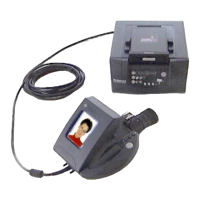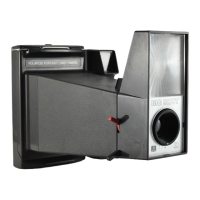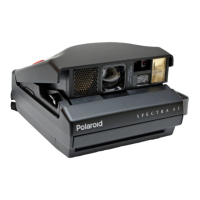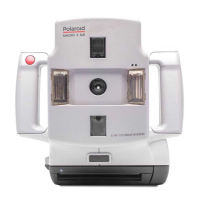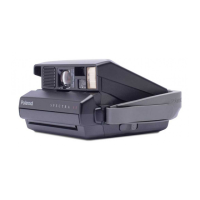CLOSE-UPS
Your SX-70 is especially designed
to open a new
world of beautiful,
exciting close-up pictures. With
no
accessories you can come
as
close
as
10¥2
inches. The closest
pictures will show your subject
at
half its actual size.
Be
sure
you have enough
light, and hold
your camera steady. You'll get
best
results in bright sunlight,
open shade, or with flash.
In
dim
light, without flash, you'll need to
use
a Tripod
Mount#
111 and
a tripod.
The professiona
I way to get a
sharp image when
close to the
subject is to set the focus
wheel
at its nearest setting, then care-
fully move the camera back and
forth
slightly until the subject is
as
clear and sharp
as
possible in
the viewfinder.
If you want to get even closer,
you can. A simple close-up acces-
sory that fits over the
lens lets
you take life-size pictures of
subjects
as
close
as
5 inches
from the camera. For more infor-
mation, ask your
dealer or
Polaroid Customer Service.
24
25
TIME
EXPOSURES
In
dim light, the SX-70 can make
automatic time exposures
as
long
as
14 seconds. For best results,
the light
on
the scene should
be
fairly even. Indoors, a bright light
or window in the scene may
"fool"
the electric eye; the rest of the
picture
will
be
too dark.
SX-70
film
gives the most natural
colors when it is exposed in
sunny
daylight or with the light
from a FlashBar, which closely
matches daylight.
You
can also
get beautiful pictures indoors
with other kinds of
lighting.
Although
pictures taken indoors
without
flash may not faithfully
reproduce the colors of the sub-
ject, they often have a charm and
beauty that makes them even
more attractive and interesting
than
flash pictures of the same
subject
would
be.
T
he
camera should
be
on
a firm
s
upport-
a tripod is
best-
and
y
ou
will need a Tripod Mount
# 111 (A). The Remote Shutter
B
utton#
112 (B) is helpful in
preventing camera shake.
Press the shutter button gently,
holding
it
in
for
at least a second
- you
will hear the
mirror
fly up.
T
hen
you can let
go
of the button
a
nd
the camera will
do
the rest
by
itself. When the electric
eye
h
as
completed
timing
the expo-
su
re,
the shutter will close and
the picture
will come out and
start to develop.

